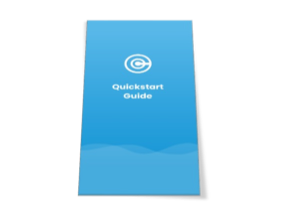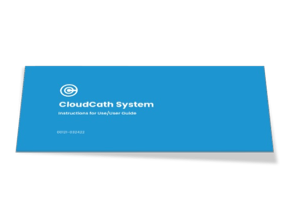Device
CloudCath Connect™ PD | Sensor
Literature
Early Detection | Publications
Time until treatment initiation is associated with catheter survival in peritoneal dialysis-related peritonitis
https://pubmed.ncbi.nlm.nih.gov/33753829/
Oki, Rikako et al. “Time until treatment initiation is associated with catheter survival in peritoneal dialysis-related peritonitis.” Scientific reports vol. 11,1 6547. 22 Mar. 2021, doi:10.1038/s41598-021-86071-y
Abstract
For peritonitis, a serious complication of peritoneal dialysis (PD), we investigated the relation between duration from the sign (PD effluent abnormalities) to treatment with appropriate antibiotics (ST time) and catheter removal. For 62 PD hospital patients, data of PD-related peritonitis (n = 109) were collected retrospectively. We examined ST time and PD catheter removal times using univariate and multivariate analyses. The catheter removal rate in the delayed ST time group (≥ 24 h) was higher than that in early ST time group (< 24 h) (38 vs. 16%, p = 0.02). Concomitant tunnel infection and delayed ST time were associated with catheter removal (OR [95% CI] 32.3 [3.15-329] and 3.52 [1.11-11.1]). Rates of catheter removal and re-development of peritonitis within 1 month after starting treatment were higher in the delayed ST time group (p = 0.02). PD duration at peritonitis and the first peritonitis episode were associated with delayed ST time (1.02 [1.00-1.04] and 3.42 [1.09-10.7]). Significant association was found between PD catheter removal and the start of treatment more than 24 h after appearance of abnormal effluent. Education for patients about prompt visitation at the onset of peritonitis with long PD duration might improve outcomes.
The Relationship Between Presentation and the Time of Initial Administration of Antibiotics With Outcomes of Peritonitis in Peritoneal Dialysis Patients: The PROMPT Study
Kidney Int Rep. 2016 Jul; 1(2): 65–72.
Muthucumarana, Kalindu et al. “The Relationship Between Presentation and the Time of Initial Administration of Antibiotics With Outcomes of Peritonitis in Peritoneal Dialysis Patients: The PROMPT Study.” Kidney international reports vol. 1,2 65-72. 11 Jun. 2016, doi:10.1016/j.ekir.2016.05.003
Abstract
The impact of time to treatment on clinical outcome is an established precept in infectious disease but is not established in peritoneal dialysis–related peritonitis (PDRP).
In a prospective multicenter study of PDRP, symptom-to-contact time (SC), contact-to-treatment time (CT), defined as the time from health care presentation to initial antibiotic, and symptom-to-treatment time (ST) were determined.
One hundred sixteen patients had 159 episodes of PDRP. Median SC for all episodes was 5.0 hours (first to third quartile [Q1–Q3]: 1.3–13.9); CT, 2.3 hours (Q1–Q3: 1.2–4.0); and ST, 9.0 hours (Q1–Q3: 4.7–25.3). Thirty-eight (23.9%) patient episodes (28 catheter removals and 10 deaths) met the primary composite outcome of PD failure at 30 days (PD-fail). The risk of PD-fail increased by 5.5% for each hour of delay of administration of antibiotics (odds ratio [OR] for CT: 1.055; 95% confidence interval [CI]: 1.005–1.109; P = 0.032). Neither SC (OR: 1.00; 95% CI: 0.99–1.01; P = 0.74) nor ST (OR: 1.00; 95% CI: 0.99–1.01; P = 0.48) was associated with PD-fail. In a multivariable analysis, only CT for presentation to a hospital-based facility compared with a community facility (OR: 1.068; 95% CI: 1.013–1.126; P = 0.015) and female sex (OR: 2.4; 95% CI: 1.1–5.4; P = 0.027) were independently associated with PD-fail. Each hour of delay in administering antibacterial therapy from the time of presentation to a hospital facility increased the risk of PD failure or death by 6.8%.
Results from the Peritoneal Dialysis Outcomes and Practice Patterns Study
Abstract
Background and objectives Quantifying contemporary peritoneal dialysis time on therapy is important for patients and providers. We describe time on peritoneal dialysis in the context of outcomes of hemodialysis transfer, death, and kidney transplantation on the basis of the multinational, observational Peritoneal Dialysis Outcomes and Practice Patterns Study (PDOPPS) from 2014 to 2017.
Design, setting, participants, & measurements Among 218 randomly selected peritoneal dialysis facilities (7121 patients) in the PDOPPS from Australia/New Zealand, Canada, Japan, Thailand, the United Kingdom, and the United States, we calculated the cumulative incidence from peritoneal dialysis start to hemodialysis transfer, death, or kidney transplantation over 5 years and adjusted hazard ratios for patient and facility factors associated with death and hemodialysis transfer.
Results Median time on peritoneal dialysis ranged from 1.7 (interquartile range, 0.8–2.9; the United Kingdom) to 3.2 (interquartile range, 1.5–6.0; Japan) years and was longer with lower kidney transplantation rates (range: 32% [the United Kingdom] to 2% [Japan and Thailand] over 3 years). Adjusted hemodialysis transfer risk was lowest in Thailand, but death risk was higher in Thailand and the United States compared with most countries. Infection was the leading cause of hemodialysis transfer, with higher hemodialysis transfer risks seen in patients having psychiatric disorder history or elevated body mass index. The proportion of patients with total weekly Kt/V ≥1.7 at a facility was not associated with death or hemodialysis transfer.
Conclusions Countries in the PDOPPS with higher rates of kidney transplantation tended to have shorter median times on peritoneal dialysis. Identification of infection as a leading cause of hemodialysis transfer and patient and facility factors associated with the risk of hemodialysis transfer can facilitate interventions to reduce these events.
CloudCath, “Performance characteristics of a prototype dialysate turbidity monitoring system to detect peritonitis in patients receiving peritoneal dialysis”
Peritoneal Dialysis International. 2023;0(0). doi:10.1177/08968608231195532
Methods:
The prototype system was tested in a single-center, proof-of-principle clinical study in patients receiving intermittent PD. We obtained multiple effluent dialysate samples from each consenting participant. We compared turbidity measurements with diagnostic criteria endorsed by the International Society of Peritoneal Dialysis (ISPD).
Results:
Overall, we analyzed 983 specimens from 65 patients, including 105 samples from patients with peritonitis and 878 samples from patients without peritonitis. An operating point derived from a previous in vitro study yielded an unadjusted sensitivity and specificity of 95.2% and 91.5%, respectively. The majority of samples that did not meet ISPD diagnostic criteria were either cases detected before criteria were met or were related to active peritonitis treatment and resolution.
Conclusion:
This proof-of-principle study demonstrates the feasibility and diagnostic accuracy of a prototype dialysate turbidity monitoring system for peritonitis surveillance.
CloudCath, “A Prospective Clinical Study to EvaluAte the AbiliTy of the CloudCath System to Detect Peritonitis During In-Home Peritoneal Dialysis (CATCH)”
Kidney International Reports, Volume 9, Issue 4, 929 – 940
Abstract:
Introduction
Peritonitis is the leading complication of peritoneal dialysis (PD). Patients are instructed to seek care promptly for signs (cloudy effluent) or symptoms (abdominal pain), and earlier treatment improves outcomes. The CloudCath Peritoneal Dialysis Drain Set Monitoring (CloudCath) system monitors turbidity in dialysis effluent and sends notifications of changes signaling possible peritonitis.
Methods
We conducted this single-arm, open-label, multicenter study of CloudCath system use during PD. We deactivated system notifications to participants and investigators, who followed standard-of-care for peritonitis signs and symptoms. Effectiveness endpoints measured time between CloudCath system notifications and peritonitis events using International Society of Peritoneal Dialysis (ISPD) criteria.
Results
Two hundred forty-three participants used the CloudCath system for 178.8 patient-years. Of 71 potential peritonitis events, 51 events (0.29 per patient-year) met ISPD white blood cell (WBC) count criteria. The system triggered notifications for 41 of 51 events (80.4%), with a median lead time of 2.6 days (10%–90% range, –1.0 to 15.7; P < 0.0001). Excluding 6 peritonitis events that occurred when the system was not in use, the system triggered notifications for 41 of 45 events (91.1%), with a median lead time of 3.0 days (10%–90% range, –0.5 to 18.8; P < 0.0001). Of the 0.78 notifications per patient-year, the majority were peritonitis events or nonperitonitis events such as exit site and tunnel infections or catheter/cycler issues.
Conclusion
The CloudCath system detected peritonitis events during PD several days earlier than the current standard-of-care and has the capacity to send notifications that could expedite peritonitis diagnosis and treatment.
Additional Links
Privacy Policy
Terms and Conditions
U.S. Patents
Site Map
Connect with Us
CloudCath and CloudCath Connect™ PD are trademarks of CloudCath
©2022 CloudCath
All Rights Reserved



